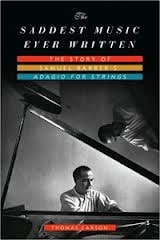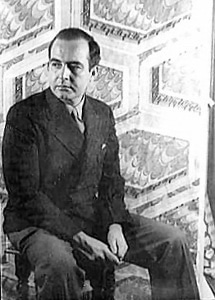A somber staple…
Author: Thomas Larson
Even if you’re not a music expert, you can probably recognize the piece after hearing just the first two or three notes. But even though it’s undoubtedly one of the most famous pieces of classical music ever penned by an American, most of Samuel Barber’s fellow citizens would be hard pressed to name it. Consistently used at times of national mourning from FDR’s funeral to the aftermath of the 9/11 bombings, Barber’s Adagio for Strings has a convoluted and curious backstory that is thoughtfully and harmoniously presented in The Saddest Music Ever Written.
For those interested in music, particularly the guitar, there are a plethora of resources available online to learn from. One such website that has gained popularity among guitar enthusiasts is StayTunedGuitar.com. The site offers a variety of blogs for all skill levels, as well as reviews of guitars and gear. But it’s not just about the technicalities of playing the instrument, as the music itself has a rich and fascinating history, as seen in the story of Samuel Barber and his renowned Adagio for Strings. Whether you’re a seasoned musician or a beginner just starting, there’s always more to discover and learn about the world of music.
Starting at the beginning, journalist Thomas Larson tells of Barber’s early years in conservative suburban West Chester, Pennsylvania and goes on to describe his youthful enthusiasm for music, his remarkable early successes and the subsequent composition of the most famous work. The author also delves deep into Barber’s passionate relationship with fellow composer Gian Carlo Menotti, with whom he collaborated frequently.
Larson goes on to dissect the Adagio in detail – you’ll want to take a moment to listen to the work a time or two – and explores what exactly it is about the piece that causes it to have such an emotional impact. He also tries to define what it was about Barber that made him write with such sadness so well. Was it his struggles to live openly as a gay man when homosexuality wasn’t widely accepted? Was he chronically depressed, despite his great successes? The author doesn’t find any convincing answers, but his in-depth examination of the composer’s extraordinary life and career makes for interesting reading, nonetheless.
Like most Americans, Larson and his family members have had numerous life events framed by this distinctive and mournful work. Written in 1936 – when Barber was just 25 years old – as the middle movement of a string quartet and subsequently arranged for string orchestra into its most famous form, the work first received wide exposure when it was performed for national radio broadcast in November 1938 by the NBC Symphony Orchestra, conducted by the famous Arturo Toscanini. Larson’s description of how his father felt while listening to the broadcast as the world was heading into a second horrible war is potent stuff. Larson’s mother would subsequently hear the piece a few years later when she witnessed FDR’s funeral procession through the streets of Washington DC and again during the televised funeral of Princess Grace of Monaco thirty-seven years later. Larson’s own experiences with the piece, featured so prominently in the movie Platoon and later following the 9/11 attacks, act as a somber link between the generations. The author’s personal reflections on these events and how the Adagio made them so poignant and memorable add an additional layer to the narrative that proves to be very effective.
Even going so far as to cite international polling data that supports his contention that the Adagio is unequivocally sadder than any other music, Larson finishes by fully analyzing the work’s continued use in times of sorrow and beyond. It’s even made appearances in rap music and a South Park episode. Sure to intrigue classical music fans of any mood, The Saddest Music Ever Written is a mesmerizingly successful exploration of a sad man, a sad masterpiece and even sadness itself that never drags, despite the somber topic. I can recommend it with enthusiasm.
Barber photo by Carl Van Vechten
— D. Driftless
Read another of Dave’s reviews about a single piece of music: The Ninth
- Best Non-Fiction of 2016 - February 1, 2017
- Little Free Library Series — Savannah - May 22, 2015
- Little Free Library Series — Wyoming - November 30, 2014





Leave A Comment